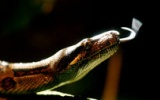The disappearance of rats led to a 50-fold increase of rare trees
Once on the tropical Palmyra Atoll got rid of the rats there for five years were 50 times more germs rare native trees. Previously, biologists had no more than 150 seedlings of five tree species, and now — 7700. Scientists emphasize that there were sprouts of pisonia large, which previously wasn’t found, while this plant is very important for nesting sea birds. The results of the study described in the journal PLOS ONE.

Palmyra Atoll is located in the Equatorial Pacific ocean approximately 1500 kilometres from Hawaii and refers to the United States. It consists of several dozen Islands with a total area of about four square kilometers. During the Second world war the Americans used it as a base, but today the Atoll is almost uninhabited — there are always only employees of environmental agencies and organizations. The Atoll is growing one of the best preserved forests of pisonia large (Pisonia grandis), while the area of such forests is shrinking around the world.
News the Most cunning hunters: what happens to the victim in the embrace of a boa constrictor
the Most cunning hunters: what happens to the victim in the embrace of a boa constrictor
Black rats (Rattus rattus) came to the island by accident — at a time when it was a base for American troops. They ate the sprouts of seven of the eight local species of trees, as well as eggs and Chicks of seabirds. In order to protect plants and animals, protection of fish and rare animals of the USA (U. S. Fish and Wildlife Service), and non-profit organizations The Nature Conservancy (TNC) and Island Conservation (IC) in June 2011 destroyed all the rats on the Atoll.
“Once the rats are gone, the changes become immediately visible, says lead author coral wolf of the conservation organization Island Conservation. We were so happy to walk through the woods of pisonii and discover the tiny seedlings covering the forest canopy, which in Palmyra had in the last decade.”